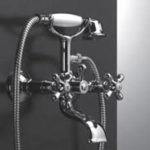
Remember, keeping accurate records of your payments, whether a salary or a draw, is essential. This will help ensure that your business finances stay organized and that you’re prepared for tax time. This salary is comparable to those of other business owners in similar roles and industries. You can research comparable salaries using industry surveys, professional associations, or job posting sites. However, a partnership agreement can specify how profits (and losses) are split among partners.
If you choose to take a salary, consult with your bookkeeper to ensure it is in line with reasonable compensation for your industry and position. No matter if you choose a draw or salary–or a combination of both– ensure that owner draw vs salary you pay yourself fairly and what your business can afford. Whichever option you choose, keep in mind both your business’ short- and long-term expenses. Taking too big a draw might leave you unable to pay a business expense.
How Much Should You Pay Yourself?
If you used to work at a major corporation in the city, that amount would likely be too large to justify for a small startup in a more rural location. When you’re recording your journal entry for a draw, you would “debit” your Owner’s Equity account, and “credit” your Cash account. If you’re not interested in the bonus route, you can always adjust your salary each year based on how your company is performing. Parcel out bonuses to yourself each quarter that correlates to company growth after break-even during that period. Once you’ve reached a break-even point in the business, it’s a good idea to correlate any salary increases (or bonuses) to the performance of the business. The rules governing Limited Liability Companies vary depending on the state, so be sure to check your state laws before moving forward.
It is always a good idea to consult with a financial advisor or tax professional before making major financial decisions. Your business has plenty of clients and your overall income for the last year was $120,000. You then discuss how much equity you now own in the business with your attorney. If you contributed assets to your business, you have equity invested there unless your business is going under and your liabilities outweigh your equity. If you own equity in your business, you can take money out of the business as the owner. This content is for information purposes only and should not be considered legal, accounting, or tax advice, or a substitute for obtaining such advice specific to your business.
How to Choose Between an Owner’s Draw and a Salary
It’s essential to keep in mind that taking large draws can leave your business underfunded. Therefore, you should always ensure enough money is left in the business account to cover upcoming expenses, debt payments, and potential emergencies. Moreover, regularly taking large draws can impact your business’s cash flow and hinder its growth. It’s important to balance meeting your income needs and ensuring the business has sufficient funds to operate and grow.
- Our focus is business law and we bring our expertise to everything we do for you.
- Both sole proprietorships and partnerships require paying self-employment taxes on company-earned profits.
- Partners usually take money in the form of distributions or their share of the profits.
- While your salary should be reasonably consistent, there are circumstances where you may want to change it.
- The downside of the salary method is that you have to determine reasonable compensation that makes you happy, keeps your company operational, and isn’t double-taxed.
- Sole proprietorships, partnerships, and LLCs not taxed as an S corporation should use the net income of the business as their payroll amount.
She could choose to have the business retain some or all of the earnings and not pay a dividend at all. For example, if Patty wishes to be paid $75,000 from her business, she might take $50,000 as a salary and distributions of $25,000. So now that you know a bit about the different options available, let’s talk about how to factor in your type of business to this equation. When choosing your own salary, be sure to choose an amount that keeps the business operational while also allowing you to enjoy your personal life outside of the business.
Want More Helpful Articles About Running a Business?
However, you need to follow the process outlined in the partnership agreement to complete the draw. As with other draws, you will need to be aware of the tax implications. Instead of an owner’s draw, partners in a partnership may receive guaranteed payments that are not subject to income tax withholding. They are treated as distributions of ordinary partnership income and are typically deductible by the business as a business expense. Paying yourself as a business owner can be tricky, but it gets easier and more intuitive with time.
If, instead, a salary is paid, the owner receives a W-2 and pays Social Security and Medicare taxes through payroll withholdings. Partners usually take money in the form of distributions or their share of the profits. You can’t earn a salary under a partnership but can get guaranteed payments for services rendered. Guaranteed payments are separate from your profit share, and you have to pay income taxes on them in addition to filing them on your personal tax return for the IRS. Where taxes come into play is at the end of the year when you’re filing your personal income tax.
























































































